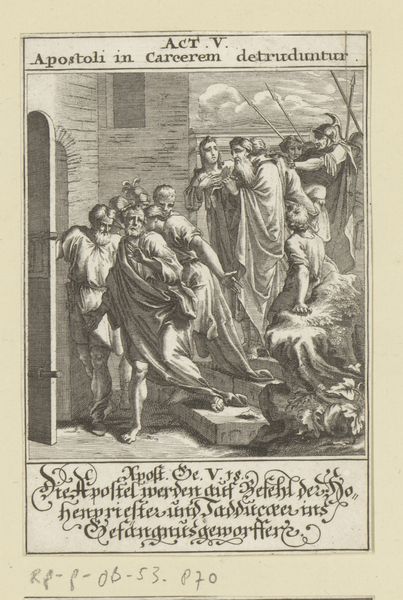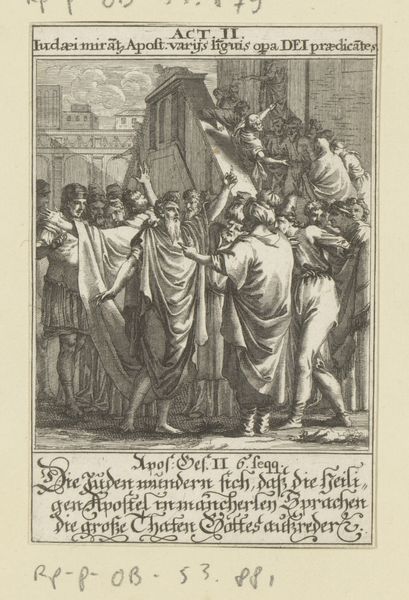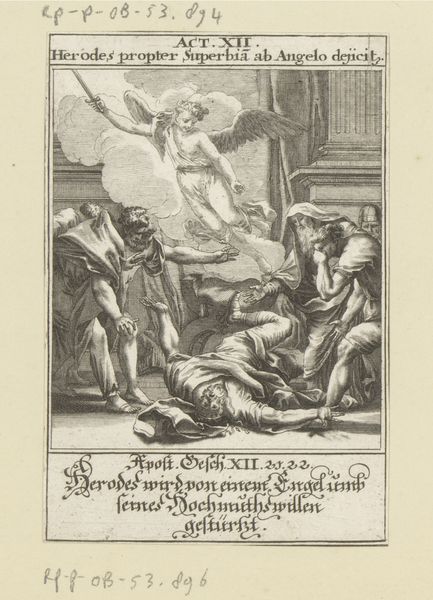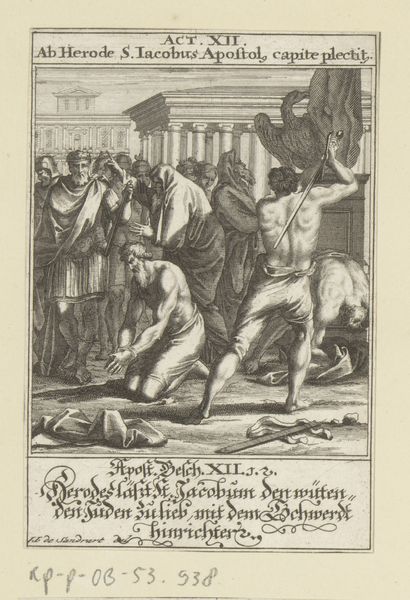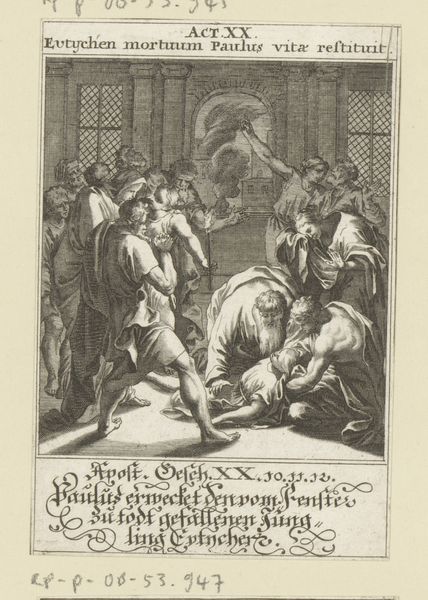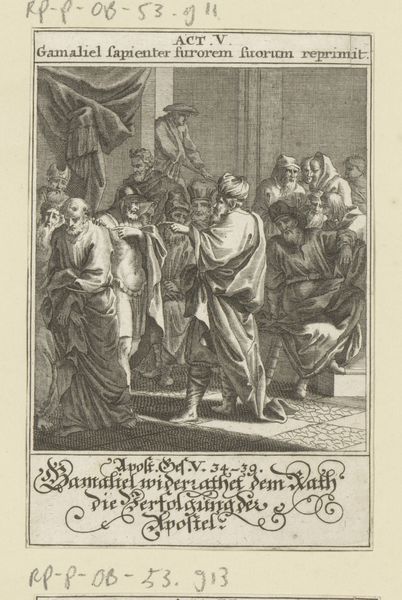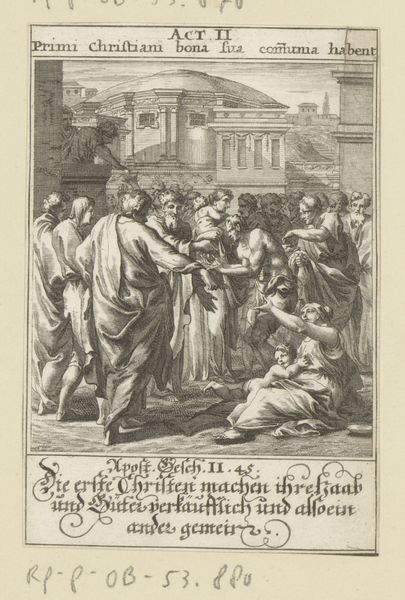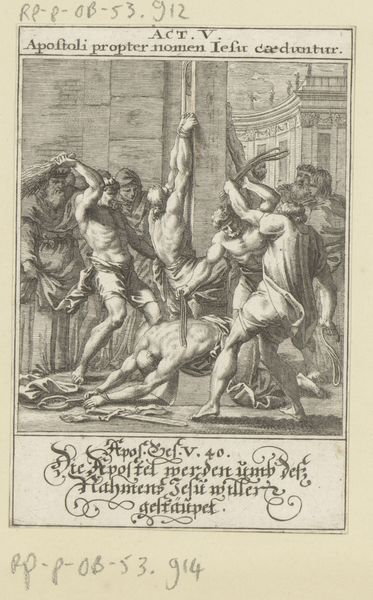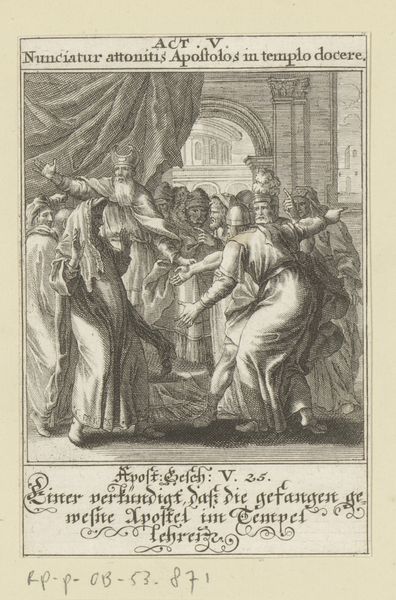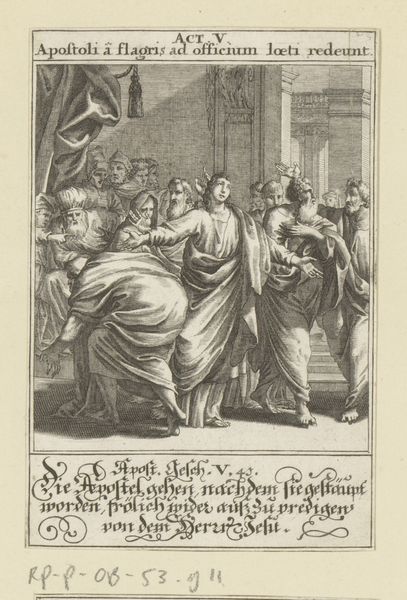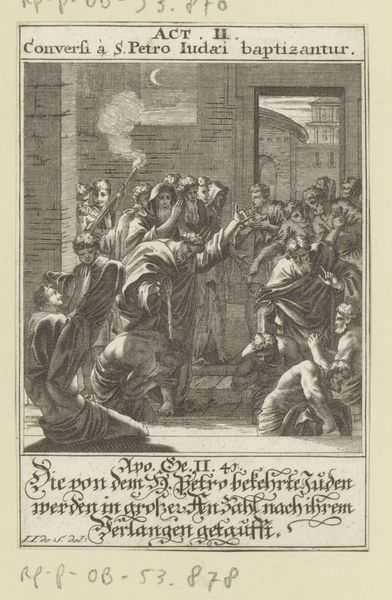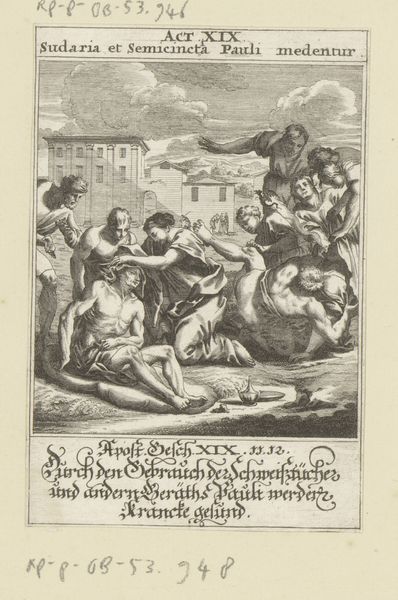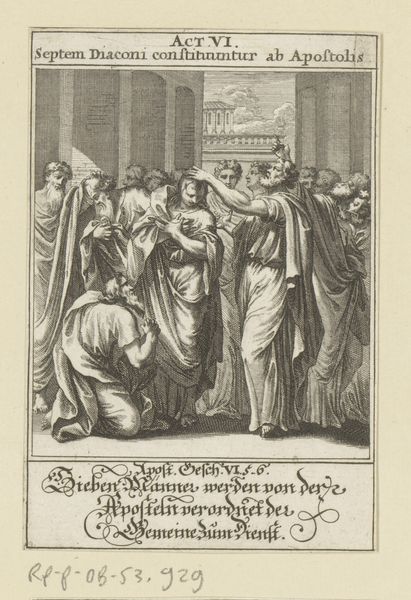
engraving
#
baroque
#
old engraving style
#
figuration
#
line
#
history-painting
#
engraving
#
realism
Dimensions: height 121 mm, width 80 mm
Copyright: Rijks Museum: Open Domain
Curator: Good morning. We’re standing before an engraving from 1697, "Ananias valt dood neer," or "The Death of Ananias," attributed to an anonymous artist. It's part of the Rijksmuseum's collection and illustrates a rather dramatic biblical scene. What strikes you about it at first glance? Editor: Well, first, the sheer theatricality of it! It's like Baroque drama condensed into a tiny stage—chaos frozen in meticulous lines. The stark contrast between the dramatic action and the stillness of the engraving itself is fascinating. Almost unsettling, like catching a glimpse of a nightmare through a perfectly clean window. Curator: That’s a wonderful observation. The scene depicts Ananias, struck dead for deceit. Notice how the artist uses symbolic visual cues—Ananias sprawled out—the apostle gesturing heavenward in divine judgment? The event suggests a culture preoccupied with both public morality and the concept of absolute authority. Editor: Absolutely. It feels loaded. But then, it all becomes symbolic doesn't it? Lying to the community translates into cosmic betrayal! The theatrical poses almost suggest they're aware of the "script." There's this performance aspect that undercuts the supposed morality being illustrated, like the figures are putting on a show for each other and, now, for us. Curator: Precisely! The architectural elements add to that theatricality. The columns frame the figures, and it directs your eye. It's about divine order imposing itself within a man-made, societal construct. Even the medium, engraving, adds layers. The permanent marks create this air of immutable law—literally etched in time. Editor: It’s thought-provoking how a simple art form, like engraving, can carry such weight! A single, small picture can embody such fundamental, but large ideas. You almost forget its just lines on a page; it sucks you right in. Curator: It speaks to how symbols work within our collective consciousness—visual shorthands that instantly convey complex narratives. The engraving style also nods towards the visual language of the time, creating an association between religious teachings and contemporary modes of visual storytelling. Editor: Definitely a morality play that's anything but simple when you start digging beneath the surface. There’s a power in these static lines to still cause a little unease hundreds of years later. I guess in that sense, it's succeeded in fulfilling the intent behind it, maybe more than expected. Curator: A chilling testament to power and authority visualized for us.
Comments
No comments
Be the first to comment and join the conversation on the ultimate creative platform.
